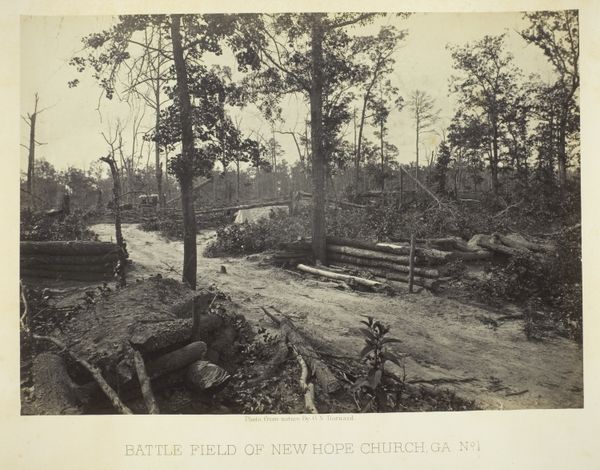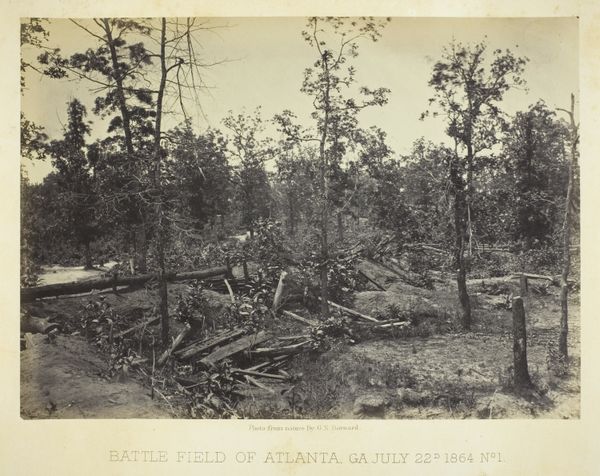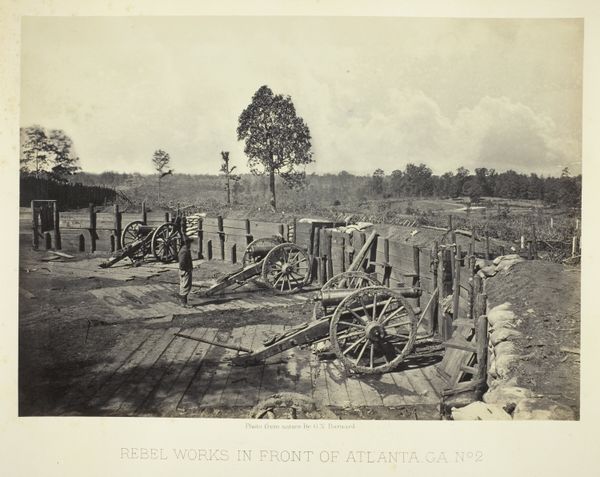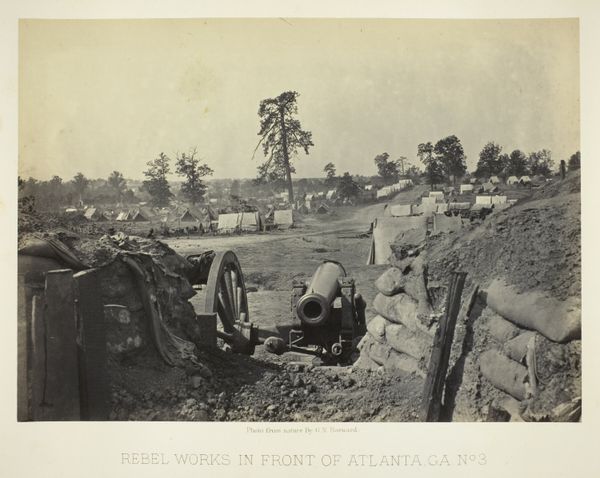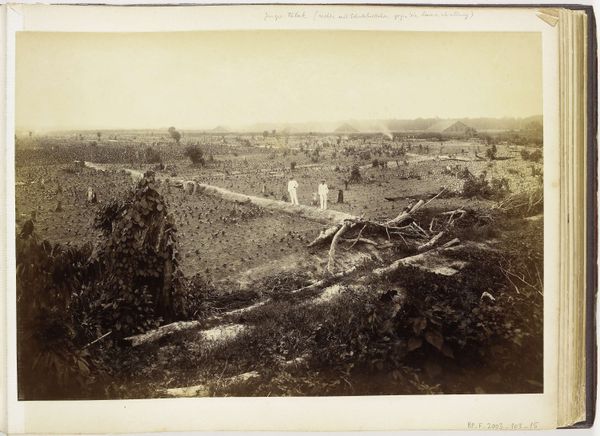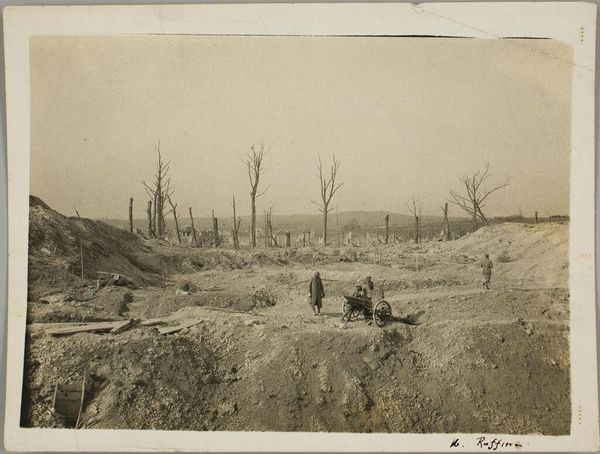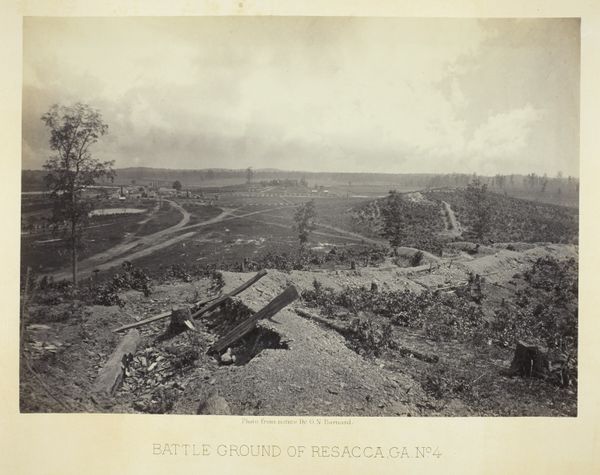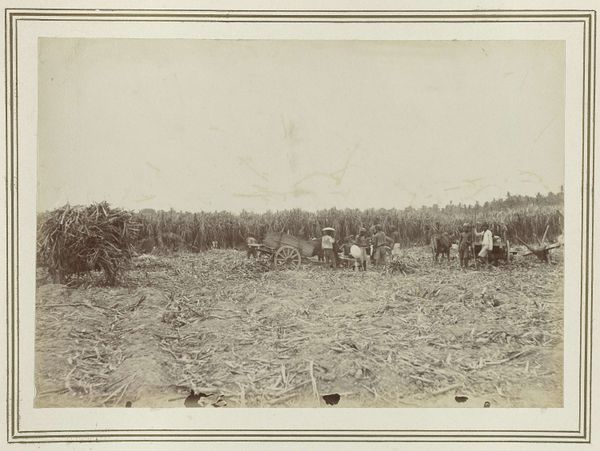
print, photography
#
still-life-photography
#
16_19th-century
# print
#
war
#
landscape
#
photography
#
men
#
united-states
Dimensions: 25.4 × 35.7 cm (image/paper); 41 × 50.9 cm (album page)
Copyright: Public Domain
Editor: So this is "Battle Field of New Hope Church, GA, No. 2" by George N. Barnard, a photograph from 1866. It's...bleak. Just earth and splintered trees. Makes you wonder about the silence after a battle. How does this image fit into the public's understanding of the Civil War at the time? Curator: That's precisely the right question. Think about who would have seen this image, and how it challenges romantic depictions of war. Barnard worked for the Union Army, documenting the aftermath. His photographs offered a stark counter-narrative, moving away from idealized heroism toward the grim realities. Consider how the relative accessibility of photography democratized war imagery for the public. Did that affect public opinion? Editor: So, it's less about glorifying the conflict and more about… showing the destruction. It’s interesting because we still see some remnants of trenches here. Do you think the photo being titled "Battle Field," instead of maybe something more abstract, speaks to how Barnard wants the public to see this work? Curator: Exactly. It's about confronting the physical and emotional cost. This image would've been seen in publications, galleries—spaces that shape collective memory. The very act of naming it "Battle Field" forces a direct engagement with the violence and its spatial consequences. Barnard doesn't give the viewer an easy escape. Think about the institutional power of these spaces. Were they exhibiting pro-war imagery too, creating contradictory messaging? Editor: It's powerful to think about this image not just as a document, but as an argument. It definitely makes me question the sanitized versions of history I learned in school. Curator: Precisely! This photograph exemplifies how art can act as a potent historical intervention, influencing social and political discourse. Understanding its public role and how audiences engaged with it, is critical to truly appreciate Barnard's work. Editor: That gives me a lot to consider as I examine other images of that era. Thanks.
Comments
No comments
Be the first to comment and join the conversation on the ultimate creative platform.
